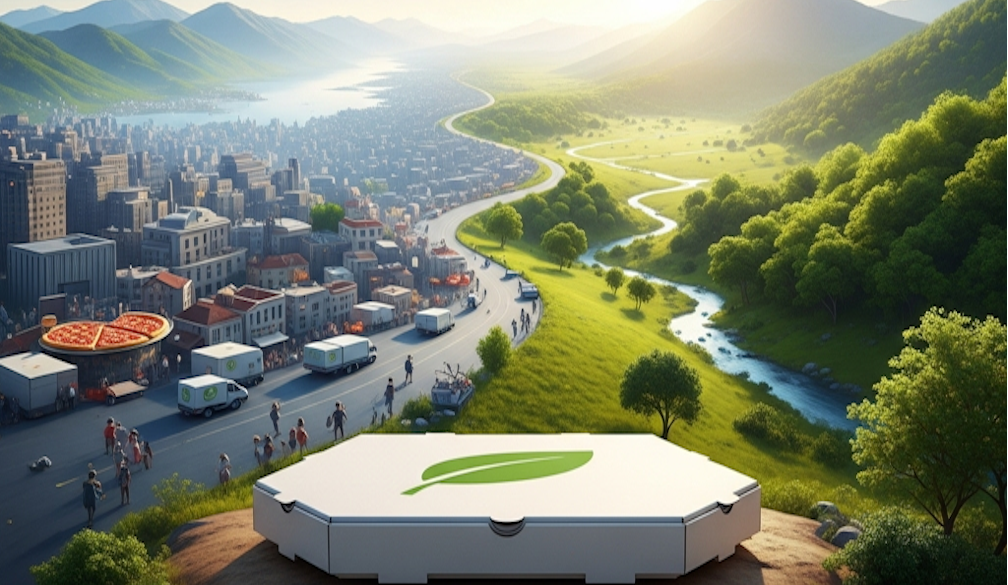The Future of the Pizza Box: Sustainability and Eco-Friendly Innovations

The pizza box may seem like a simple piece of packaging, but it plays a central role in one of the world’s favorite foods. Millions of pizzas are delivered every day, and with them come millions of boxes. Traditionally made from corrugated cardboard, pizza boxes have long been considered practical and cost-effective. However, with growing awareness about sustainability and waste management, the industry is rethinking how pizza boxes are designed, produced, and recycled. Eco-friendly innovations are transforming the humble pizza box into a packaging solution that supports both businesses and the planet.
Why Sustainability Matters in Pizza Packaging
The sheer scale of pizza consumption highlights the importance of sustainable packaging. A single household may order pizza multiple times a month, and restaurants can go through thousands of boxes weekly. While the typical pizza box is recyclable, grease and food residues often contaminate the material, making it unsuitable for recycling. As landfills grow and consumer demand for eco-conscious practices increases, developing greener solutions is no longer optional—it’s essential.
Recyclability Challenges with Pizza Boxes
One of the biggest issues with the pizza box is contamination. When oil and cheese seep into the cardboard fibers, they prevent recycling facilities from processing the material effectively. Clean portions of the box, such as the lid, can often be recycled, while greasy bottoms may need to be discarded. To address this, manufacturers and waste management companies are educating consumers on proper disposal practices and developing new materials that resist grease without harming recyclability.
Grease-Resistant and Compostable Coatings
Recent innovations in pizza box design include grease-resistant coatings that remain compostable and environmentally safe. Unlike plastic or chemical-based linings, these coatings are plant-based and biodegradable, allowing boxes to break down naturally without releasing harmful substances. Compostable pizza boxes not only reduce landfill waste but also support circular economies by returning nutrients to the soil.
Using Recycled and Renewable Materials
Many manufacturers are now producing pizza boxes from recycled cardboard, reducing reliance on virgin paper pulp. Others are experimenting with renewable resources such as bamboo or sugarcane fibers, which are fast-growing and highly sustainable. These alternative materials maintain strength and insulation while offering a lower environmental footprint. By adopting renewable options, restaurants demonstrate their commitment to sustainability, which resonates strongly with eco-conscious customers.
Innovative Designs for Efficiency
Eco-friendly pizza packaging isn’t just about materials—it’s also about smarter design. Some companies are developing pizza boxes with perforated sections that double as serving plates, eliminating the need for disposable tableware. Others include built-in storage compartments for leftovers, encouraging reuse rather than waste. These design innovations reduce overall consumption of additional packaging, making them both environmentally and customer-friendly.
Sustainable Printing and Branding
Branding is a vital part of the pizza box, and sustainability is influencing this area too. Eco-friendly inks made from soy or vegetable bases are replacing petroleum-based inks, reducing the release of volatile organic compounds (VOCs). Water-based printing processes also minimize environmental impact while delivering vibrant, high-quality designs. These improvements allow restaurants to showcase their brand while staying true to eco-conscious values.
The Role of Consumers in Sustainability
Sustainable pizza boxes also depend on consumer behavior. Proper disposal—such as separating clean and greasy sections or composting biodegradable boxes—ensures eco-friendly designs fulfill their purpose. Restaurants can support this effort by including clear recycling or composting instructions on their boxes, encouraging responsible habits among customers. This collaboration between businesses and consumers is vital for achieving real environmental impact.
Meeting Consumer Expectations
Today’s consumers are more environmentally aware than ever, and they expect businesses to reflect these values. Offering sustainable pizza boxes allows restaurants to meet these expectations and stand out in a competitive market. Customers are more likely to support brands that align with their values, making eco-friendly packaging both an ethical choice and a smart business strategy.
Cost Considerations and Long-Term Value
While sustainable pizza boxes may cost more initially, the long-term benefits outweigh the expense. Reduced waste disposal costs, positive brand reputation, and increased customer loyalty all contribute to greater value. Many suppliers are also scaling up eco-friendly production, which is gradually bringing down costs. For restaurants, investing in sustainable packaging is both a responsible decision and a competitive advantage.
The Global Shift Toward Green Packaging
The shift toward eco-friendly packaging is not limited to pizza—it is part of a global movement across the food industry. Governments are introducing stricter regulations on waste and plastics, while consumers are demanding greener solutions. The pizza box is at the forefront of this shift, evolving into a symbol of how even everyday items can contribute to sustainability goals. As innovations continue, the pizza box of the future will likely be 100% compostable, recyclable, and made from renewable resources.
Conclusion: A Greener Future for Pizza Boxes
The pizza box is no longer just a simple container for takeout—it is a key part of the sustainability conversation. With innovations in compostable coatings, recycled materials, and smart designs, pizza boxes are evolving to meet the demands of environmentally conscious consumers and businesses. By embracing eco-friendly packaging, restaurants not only reduce their environmental footprint but also strengthen their brand identity and customer relationships. For the future of food packaging, the pizza box is proving that even small changes can have a big impact on the planet.










